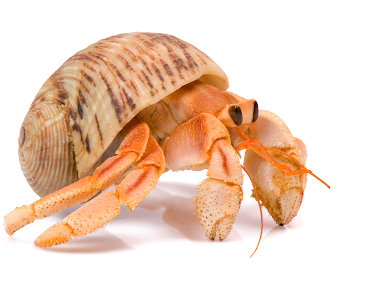A new species of trilobite from the upper Cambrian McKay Group was introduced in March of 2020:
Aciculolenus askewi. The species is named after Don Askew, an avid fossil hunter of Upper Cambrian trilobites from Cranbrook, British Columbia, Canada, who has discovered several new species in the East Kootenays.
Don was the first to brave the treacherous cliffs up the waterfall on the west side of the ravine below Tanglefoot mountain. That climb led to his discovery of one of the most prolific outcrops in the McKay Group with some of the most exciting and best-preserved trilobites from the region.
The faunal set are similar to those found at site one — the first of the trilobite outcrops discovered by Chris New and Chris Jenkins — an hours hike through grizzly bear country.
The specimens found at the top of the waterfall are not in calcite wafers, as they are elsewhere, instead, these exceptionally preserved specimens are found complete with a thin coating of matrix that must be prepped down to the shell beneath.
Askew was also the skill preparator called upon to tease out the details from the 'gut trilobite' recently published from the region. In all, this area has produced more than 60 new species — many found by Askew — and not all of which have been published yet.
I caught up with Don last summer on a trip to the region. He was gracious in openly sharing his knowledge and a complete mountain goat in the field — a good man that Askew. Not surprising then that Brian Chatterton would do him the honour of naming this new species after him.
Chatterton, Professor Emeritus at the University of Alberta, is an invertebrate palaeontologist with a great sense of humour and a particular love of trilobites. Even so, his published works span a myriad of groups including conodonts, machaeridians, sponges, brachiopods, corals, cephalopods, bivalves, trace fossils — to fishes, birds and dinosaurs.
Brian Chatterton has been visiting the East Kootenay region for many years. In 1998, he and Rolf Ludvigsen published the pivotal work on the "calcified trilobites" we had begun hearing about in the late 1990s. There were tales of blue trilobites in calcified layers guarded by a resident Grizzly. This was years before logging roads had reached this pocket of paleontological goodness and hiking in — bear or no bear — was a daunting task.
In his Cambridge University Press paper, Chatterton describes the well-preserved fauna of largely articulated trilobites from three new localities in the Bull River Valley.
 |
| The Dream Team at Fossil Site #15, East Kootenays |
All the trilobites from these localities are from the lower or middle part of the
Wujiajiania lyndasmithae Subzone of the Elvinia Zone, lower Jiangshanian, in the McKay Group.
Access is via a bumpy ride on logging roads 20 km northeast of Fort Steele that includes fording a river (for those blessed with large tires and a high wheelbase) and culminating in a hot, dusty hike and death-defying traipse down 35-degree slopes to the localities.
Two new species were proposed with types from these localities: Aciculolenus askewi and Cliffia nicoleae. The trilobite (and agnostid) fauna from these localities includes at least 20 species that read like a who's who of East Kootenay palaeontology:
Aciculolenus askewi n. sp., Agnostotes orientalis (Kobayashi, 1935), Cernuolimbus ludvigseni Chatterton and Gibb, 2016, Cliffia nicoleae n. sp., Elvinia roemeri (Shumard, 1861), Grandagnostus? species 1 of Chatterton and Gibb, 2016, Eugonocare? phillipi Chatterton and Gibb, 2016, Eugonocare? sp.
A, Housia vacuna (Walcott, 1912), Irvingella convexa (Kobayashi, 1935), Irvingella flohri Resser, 1942, Irvingella species B Chatterton and Gibb, 2016, Olenaspella chrisnewi Chatterton and Gibb, 2016, Proceratopyge canadensis (Chatterton and Ludvigsen, 1998), Proceratopyge rectispinata (Troedsson, 1937), Pseudagnostus cf. P. josepha (Hall, 1863), Pseudagnostus securiger (Lake, 1906), Pseudeugonocare bispinatum (Kobayashi, 1962), Pterocephalia sp., and Wujiajiania lyndasmithae Chatterton and Gibb, 2016.
 |
| Chris New, pleased as punch atop Upper Cambrian Exposures |
It has been the collaborative efforts of Guy Santucci, Chris New, Chris Jenkins, Don Askew and Stacey Gibb that has helped open up the region — including finding and identifying many new species or firsts including
Pseudagnostus securiger, a widespread early Jiangshanian species not been previously recorded from southeastern British Columbia.
Other interesting invertebrate fossils from these localities include brachiopods, rare trace fossils, a complete silica sponge (Hyalospongea), and a dendroid graptolite.
The species we find here are more diverse than those from other localities of the same age in the region — and enjoy much better preservation.
The birth of new species into our scientific nomenclature takes time and the gathering of enough material to justify a new species name. Fortunately for Labiostria gibbae, specimens had been found of this rare species had been documented from the upper part of Wujiajiania lyndasmithae Subzone — slightly younger in age.
Combined with an earlier discovery, they provided adequate type material to propose the new species — Labiostria gibbae — a species that honours Stacey Gibb and which will likely prove useful for biostratigraphy.
Reference: https://www.cambridge.org/core/journals/journal-of-paleontology/article/abs/midfurongian-trilobites-and-agnostids-from-the-wujiajiania-lyndasmithae-subzone-of-the-elvinia-zone-mckay-group-southeastern-british-columbia-canada/E8DBC8BD635863E840715122C05BB14A#
Photo One: Aciculolenus askewi by Chris Jenkins, Cranbrook, British Columbia
Photo Two: L to R: Dan Bowden, Guy Santucci, Chris Jenkins, Dan Askew and John Fam at Fossil Site #15, East Kootenay Region, British Columbia, Canada, August 2, 2020.
Photo Three: Chris New pleased as punch atop of Upper Cambrian Exposures in the East Kootenay Region, British Columbia, Canada












%20Fram%20Formation%20of%20Nunavut,%20Canada.%20The%20genus%20contains%20a%20single%20species,%20Q.%20wakei,%20known%20from%20a%20partial%20skele.png)




















